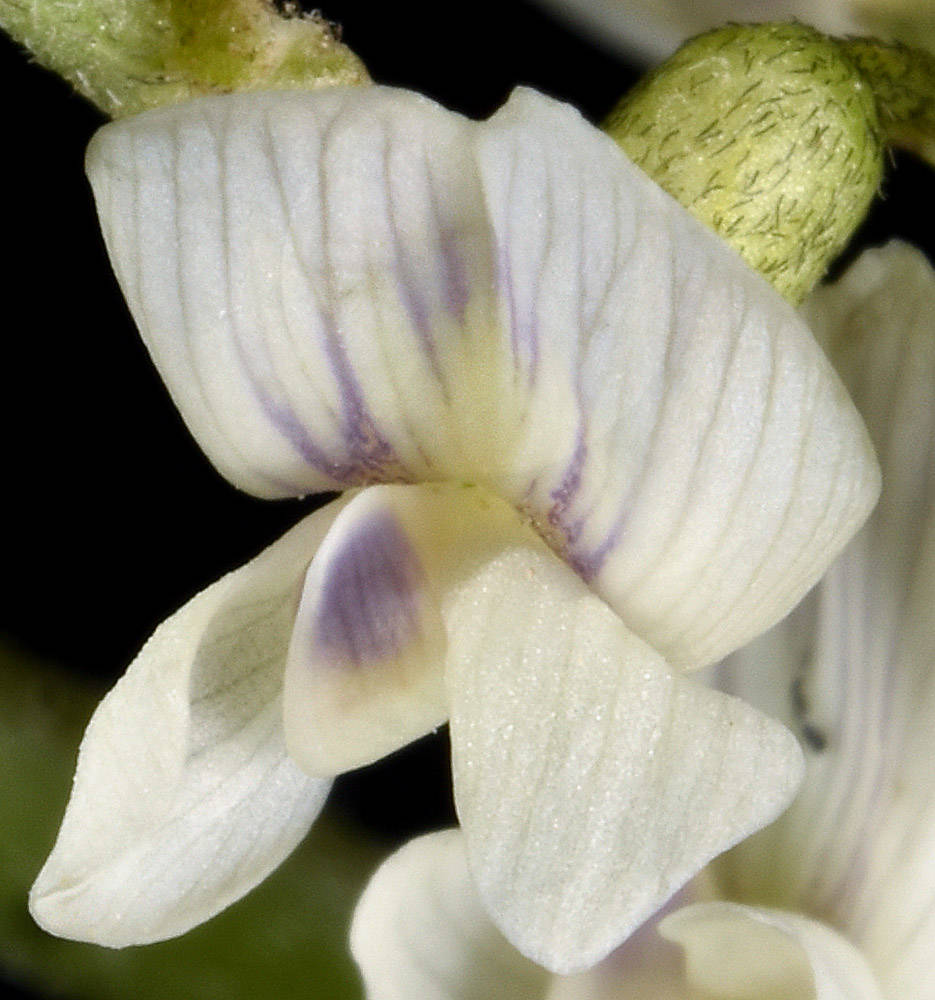
Plants perennial, caulescent, strigillose, hairs basifixed.
Stems several–numerous, prostrate to ascending or erect, 10–50 cm.
Leaves 2–9 cm; leaflets (7)11–21(25), narrowly oblong to elliptic, linear, oblanceolate or obovate, 3–24(27) × 0.4–6 mm, tips acute to obtuse, mucronate or emarginate, surfaces abaxially strigose, adaxially glabrous; stipules 1.5–8 mm, at least lowermost connate-sheathing.
Inflorescences racemes loosely or remotely 3–23-flowered; peduncles 0.2–4 cm; bracts 0.5–3 mm; pedicels 0.7–3.2 mm; bracteoles 0–2.
Flowers ascending at anthesis; calyces 2.5–6 mm, strigillose with black, white, or a mixture of black and white hairs, tubes 2–3 mm, teeth subulate or linear, 0.7–3 mm; corollas 6–9(11) mm, white to ochroleucous or pink-purple; ovules 3–9.
Fruits unilocular, pendulous, elliptic to oblong, straight or curved, laterally flattened, bicarinate, 7–17 × 2.5–4.5 mm, dark brown to black at maturity, usually glabrous or with few scattered white hairs; valves papery; stipes 1–7 mm.
2n=24.
Sagebrush communities. Flowering May–Aug. 1200–1800 m. BR. ID, NV; north to Yukon Territory, northeast to Manitoba, east to MN, southeast to CO. Native.
This widely distributed species has only recently been found in Malheur County; it is probably native.